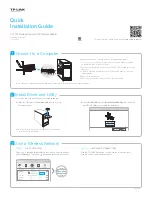
XtendLan XL-GDB series User’s Guide
2.8.3 Remote Loopback (RemoteLB)
The Remote Loopback is able to be activated and deactivated through EOC via CID interfaces.
This loopback is used for checking the loop and transceiver units of STU-C/STU-R. The received
signal is sent to network side interface during the RLB loopback. For example, if Remote
Loopback is activated at STU-C, the direction of local loopback would be like (c) in figure 2.3
STU-C
Figure 2.3 Remote Loopback
2.8.4 Remote Payload Loopback (PayloadLB)
The Remote Payload Loopback is able to be activated and deactivated through EOC via CID
interfaces, and is set up inside STU-C/STU-R as close as possible to the network side interfaces.
The received signal is sent to network side interface. For example, if Remote Payload Loopback is
activated at STU-C, the direction of Remote loopback would be like (D) in figure 2.4
STU-C
Figure 2.4 Remote Payload Loopback When any of these modes is activated, the
loopback path causes the system operation to be disrupted. In particular, the Local SHDSL
Loopback path opens the line, causing the system to lose synchronization. Once this loopback is
deactivated, the system will reinitialize.
12
Summary of Contents for XL-GDB101E
Page 87: ...XtendLan XL GDB series User s Guide 87...
Page 88: ...XtendLan XL GDB series User s Guide 88...
Page 89: ...XtendLan XL GDB series User s Guide 89...
Page 92: ...XtendLan XL GDB series User s Guide 92...
Page 95: ...XtendLan XL GDB series User s Guide APPENDIX D Loopback Illustration 95...













































